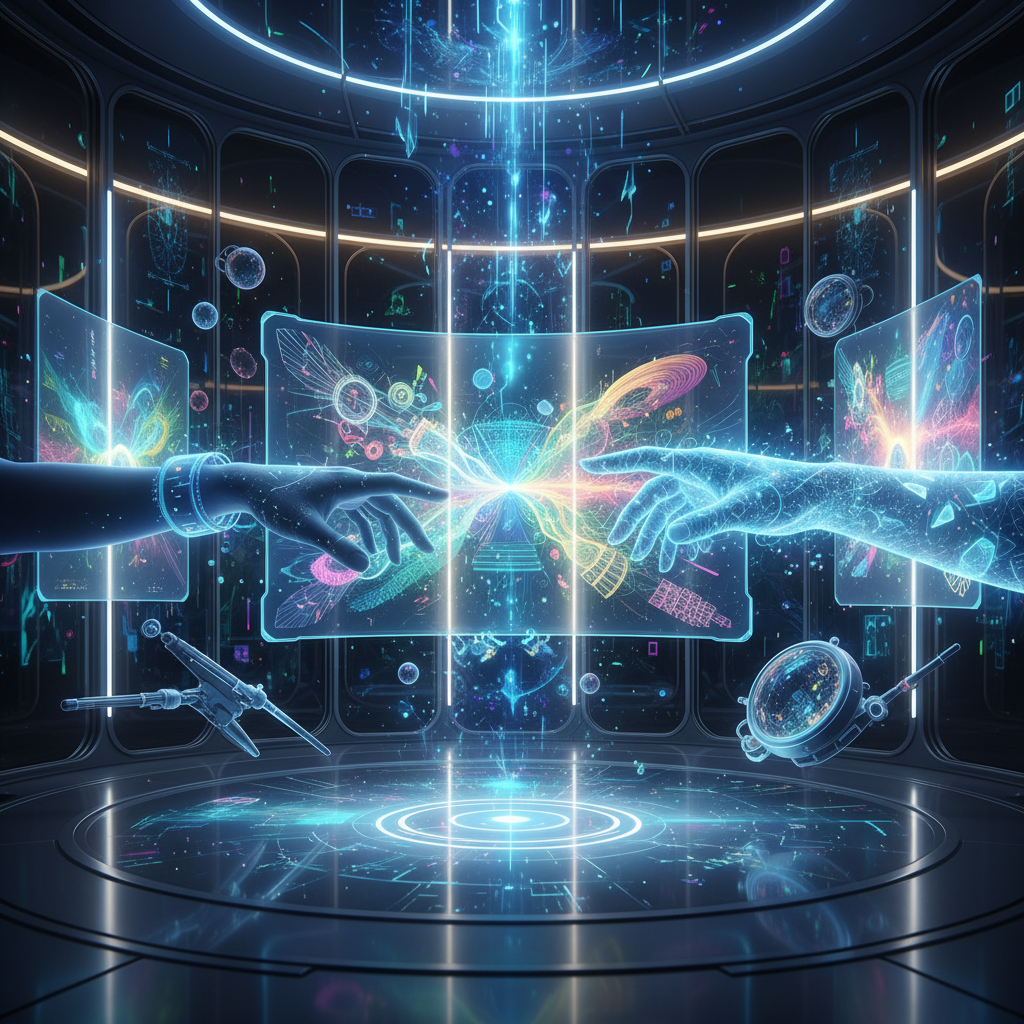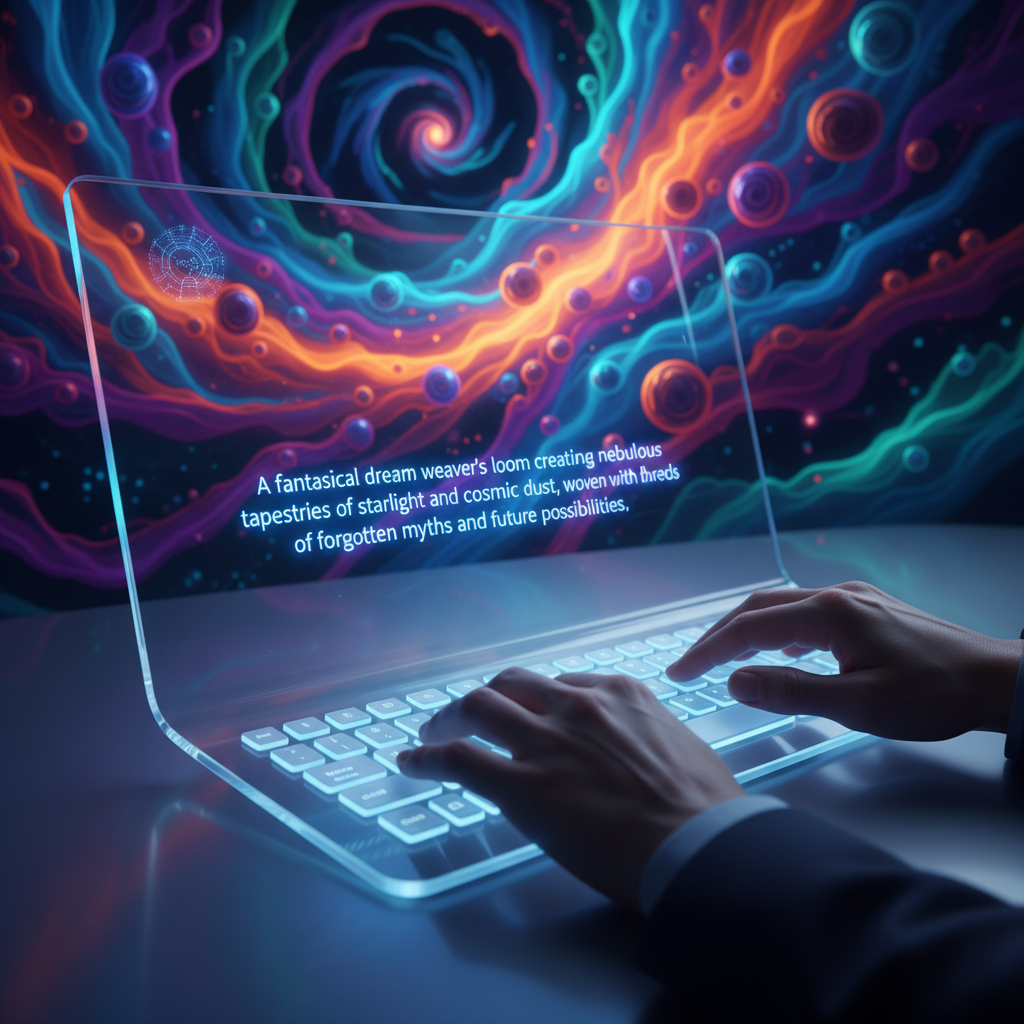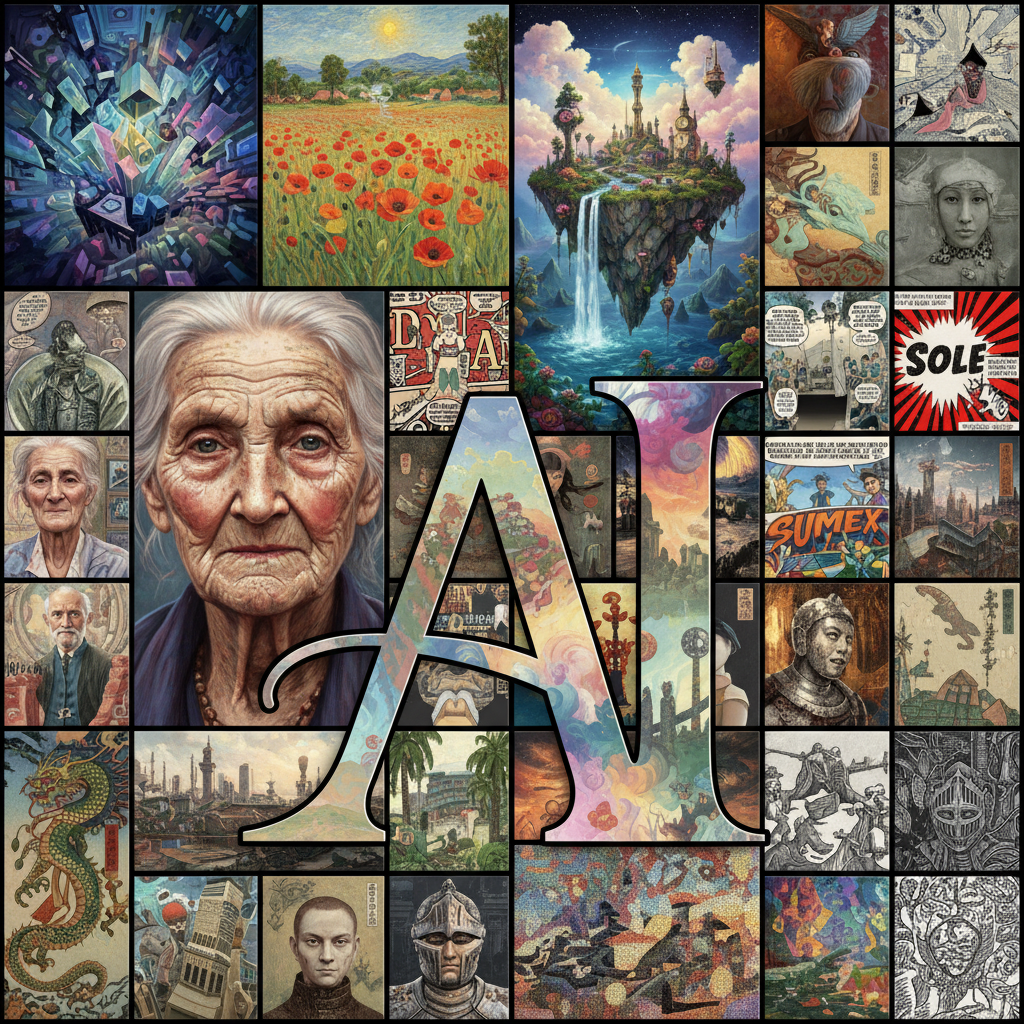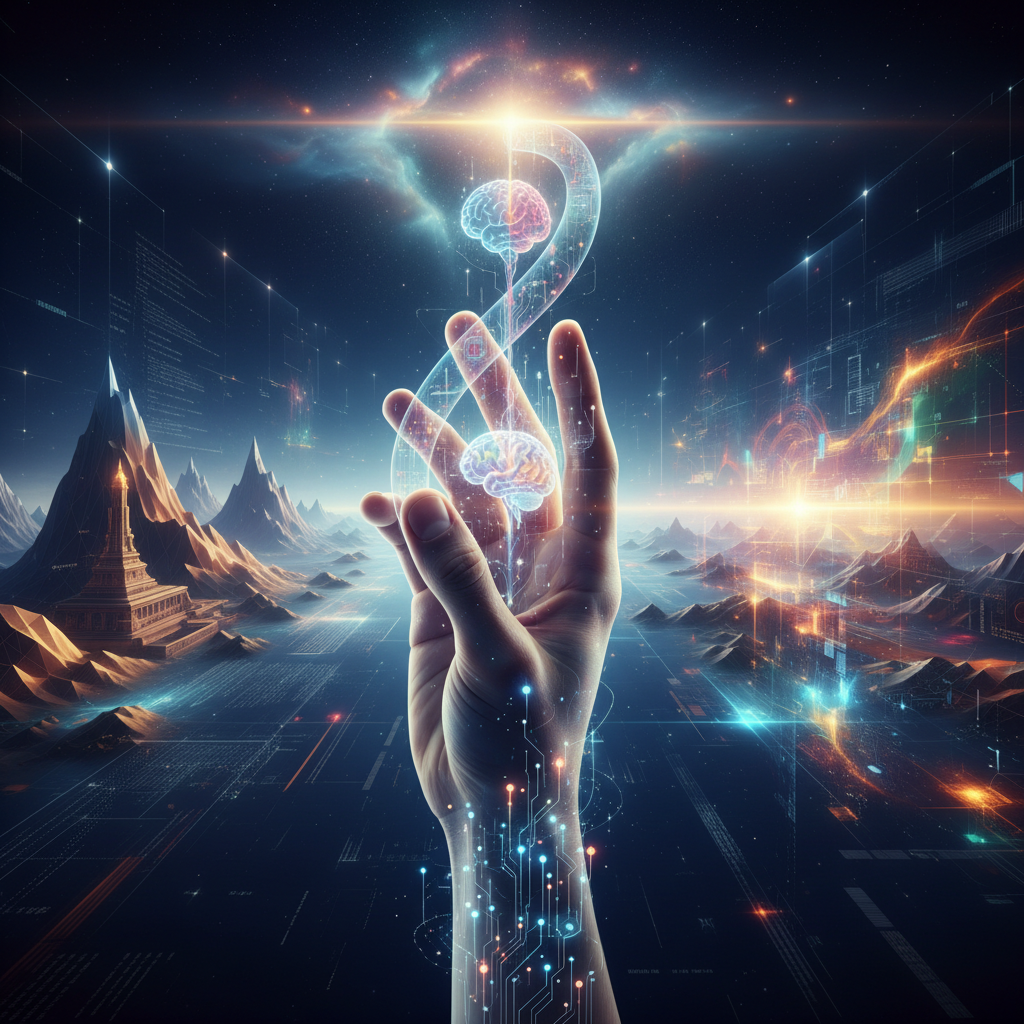
Mastering Generative AI Art: Tools, Trends & Creative Futures
Mastering Generative AI Art: Tools, Trends & Creative Futures

Introduction: The Dawn of a New Creative Era
The landscape of digital art has been irrevocably transformed by the advent of Generative AI art. What once seemed like science fiction is now a tangible reality, with algorithms capable of creating stunning, intricate, and often breathtaking visuals from simple text prompts. This revolution has not only democratized art creation but has also opened up unprecedented avenues for exploration, pushing the boundaries of what’s possible in the artistic realm. From seasoned artists to curious hobbyists, AI art generators are empowering individuals to manifest their visions with remarkable ease and speed.
This comprehensive guide will delve deep into the captivating world of AI image creation, equipping you with the knowledge and insights needed to master this exciting new medium. We’ll explore the cutting-edge AI art tools that are defining the industry, uncover the latest AI art trends 2024, and peer into the future of AI art, examining its profound impact on creativity, commerce, and culture. Whether you’re looking to understand how to make AI art, discover the best AI art apps, or navigate the complexities of AI art copyright, this article will serve as your ultimate resource in the ever-evolving AI art landscape.
The Genesis of Generative AI Art: A Brief Overview
The concept of machines creating art is not entirely new, but the sophistication and accessibility we see today are unprecedented. The journey of Generative AI art began with foundational research in neural networks and machine learning, culminating in powerful models like Generative Adversarial Networks (GANs) and Diffusion Models. These technologies learn from vast datasets of existing imagery, enabling them to generate entirely new and unique visuals. This rapid evolution has birthed a diverse array of AI creative tools, making high-quality AI generated visuals a reality for millions.
Essential AI Art Tools & Platforms: Your Creative Arsenal
The market for AI art software is booming, offering a plethora of options for every skill level and artistic ambition. Understanding the strengths and nuances of each platform is key to unlocking your full creative potential.

Dominant Players in the AI Art Arena
DALL-E 3 Art: The Pioneer’s Evolution
Developed by OpenAI, DALL-E was one of the first Text-to-image AI models to capture global imagination. DALL-E 3 represents a significant leap forward, offering enhanced image quality, better prompt understanding, and seamless integration with tools like ChatGPT. Its ability to interpret complex, nuanced prompts with remarkable accuracy makes it a favorite for detailed conceptualization. For those seeking sophisticated AI image creation, DALL-E 3 is an indispensable tool.
Midjourney: The Artistic Powerhouse
Midjourney has rapidly become synonymous with breathtaking, often surreal and cinematic Generative AI art. Renowned for its aesthetic prowess and vibrant imagery, Midjourney excels at producing highly stylized and visually stunning outputs. While initially command-line based, its Discord interface has become a familiar environment for many artists. Many seek Midjourney alternatives to explore different aesthetic capabilities, but its unique style remains a benchmark.
Stable Diffusion: The Open-Source Revolutionary
Stable Diffusion stands out as an open-source AI art generator, offering unparalleled flexibility and control. Its adaptable nature allows for local installation, fine-tuning, and a vast ecosystem of custom models and extensions. This makes it a favorite among developers, researchers, and artists who desire deep customization and ownership over their creative process. Exploring Stable Diffusion prompts reveals the incredible versatility of this platform for various AI art styles.
Exploring Midjourney Alternatives and Other Promising Tools
While DALL-E 3 and Midjourney dominate the conversation, several other AI art tools offer unique features and cater to different user needs:
- Adobe Firefly: Integrated directly into Adobe’s creative suite, Firefly is designed with commercial use and creative workflows in mind, focusing on ethical data sourcing and creator compensation. It’s becoming a powerful tool for Commercial AI art and integrates seamlessly for creating digital art with AI.
- Leonardo.Ai: A popular choice for game developers and concept artists, Leonardo.Ai offers powerful image generation, fine-tuned models, and an intuitive interface, making it one of the best AI art apps for specific niches.
- DreamStudio (Stability AI): The official interface for Stable Diffusion, offering a user-friendly way to harness its power without local installation.
- NightCafe Creator: Known for its diverse range of art styles and a strong community, NightCafe is an excellent platform for AI art inspiration and experimentation.
- Artbreeder: Specializing in “breeding” new images from existing ones, Artbreeder is perfect for iterative design and exploring variations.
Free AI Art Generators: Accessibility for All
For beginners or those on a budget, several free AI art generators provide an excellent entry point into the world of AI image creation:
- Craiyon (formerly DALL-E mini): While not as sophisticated as its commercial counterparts, Craiyon offers a fun and free way to experiment with Text-to-image AI.
- Playground AI: Offers a generous free tier with various models, including Stable Diffusion, and a user-friendly interface.
- Lexica Art: Functions as both an image generator and a searchable database of Stable Diffusion prompts, making it a great resource for Prompt engineering AI art.
For more tools and resources, check out the HyperDaily blog.
How to Make AI Art: A Step-by-Step Guide for Beginners
Creating digital art with AI is an accessible process, even for AI art for beginners. Here’s a simplified breakdown:
- Conceive Your Vision: What do you want to create? Think about the subject, mood, style, and composition. This is the foundation of your AI art inspiration.
- Choose Your Tool: Select an AI art generator that aligns with your vision and experience level. For starting, Best AI art apps like DALL-E 3, Midjourney, or Playground AI are good choices.
- Craft Your Prompt: This is the most crucial step. Your text prompt guides the AI. Be descriptive, specific, and creative. More on this in the next section!
- Generate and Iterate: Input your prompt and let the AI work its magic. You’ll often get multiple variations. Review them, select your favorites, and refine your prompt for subsequent generations.
- Refine and Enhance (Optional): Many artists use traditional image editing software (like Photoshop) to touch up AI-generated images, adding final details or correcting imperfections.
- Share Your Masterpiece: Once satisfied, share your AI generated visuals with the world!
The Art of Prompt Engineering AI Art
Prompt engineering AI art is less about coding and more about creative language. It’s the skill of communicating effectively with the Text-to-image AI to achieve desired results. A well-crafted prompt is the difference between a generic image and a stunning piece of art.

Principles of Effective Prompting
- Be Specific: Instead of “dog,” try “a fluffy golden retriever puppy playing in a sun-drenched meadow.”
- Use Adjectives and Adverbs: “Majestic, ethereal, glowing, dimly lit, gracefully.”
- Specify Styles and Artists: “Oil painting, cyberpunk, impressionistic, in the style of Van Gogh, by Greg Rutkowski.” This is key for exploring diverse AI art styles.
- Define Composition and Lighting: “Close-up, wide shot, cinematic lighting, golden hour, moody.”
- Exclude Unwanted Elements: Use negative prompts (e.g.,
--no blur, ugly, distortedin Stable Diffusion or Midjourney) to guide the AI away from undesirable outputs. - Experiment with Parameters: Many AI art tools offer parameters (e.g., aspect ratios, stylization levels, seed values) that can dramatically alter the output. Mastering Stable Diffusion prompts often involves deep dives into these parameters.
Advanced Prompt Strategies
- Chaining Concepts: Combine seemingly disparate ideas to create unique outcomes.
- Weighting Terms: Some platforms allow you to assign weights to different parts of your prompt, emphasizing certain elements over others.
- Iterative Refinement: Start with a broad concept and gradually add details, modifiers, and stylistic cues, generating multiple images at each step to guide your process. This is fundamental to creating digital art with AI at a professional level.
Exploring Diverse AI Art Styles and Inspiration
One of the most exciting aspects of Generative AI art is its ability to produce an astonishing array of AI art styles. From photorealism to abstract expressionism, the possibilities are virtually limitless.

Popular AI Art Styles
- Photorealism: Creating images that are indistinguishable from photographs. Essential for commercial AI art and product visualization.
- Fantasy & Sci-Fi: Generating epic landscapes, mythical creatures, and futuristic cityscapes.
- Anime & Manga: Reproducing popular animation styles with precision.
- Abstract & Surrealism: Exploring non-representational forms, dreamscapes, and illogical compositions.
- Impressionistic & Classical: Emulating the brushstrokes and techniques of historical art movements.
- Cyberpunk & Dystopian: Dark, gritty, and technologically advanced aesthetics.
- Pixel Art: Generating charming retro-style graphics.
Finding AI Art Inspiration
- Art Communities: Platforms like ArtStation, DeviantArt, and even dedicated Discord servers for AI art generators are brimming with inspiration.
- Prompt Databases: Websites like Lexica Art offer searchable databases of prompts and their corresponding images, perfect for learning prompt engineering AI art techniques.
- Real-World Art: Study traditional art forms, photography, and design for ideas on composition, color theory, and lighting.
- Nature and Everyday Life: Observe the world around you. A unique cloud formation or an interesting shadow can spark an idea for AI image creation.
Current & Emerging AI Art Trends 2024
The AI art landscape is constantly shifting, with new AI art technology emerging at a rapid pace. Staying abreast of AI art trends 2024 is crucial for artists and creators.
Key Trends Shaping the Future
- Hyper-Personalization: AI generating art tailored specifically to individual tastes and preferences, potentially for customized home decor or unique avatars.
- Multi-Modal AI: Beyond Text-to-image AI, expect more integration with audio, video, and 3D models, allowing for richer, more immersive creative experiences.
- Ethical Sourcing & Attribution: Increased focus on ensuring AI models are trained on ethically sourced data, addressing concerns around AI art copyright and artist compensation. Tools like Adobe Firefly are leading this charge.
- AI-Assisted Storytelling: AI not just creating images but also contributing to narratives, character design, and world-building, transforming the way we consume and create stories.
- Interactive & Dynamic Art: AI art that responds to viewer input, environmental data, or even biometric feedback, creating ever-changing, live installations.
- Integration with AR/VR: Seamlessly bringing AI generated visuals into augmented and virtual reality experiences, blurring the lines between digital and physical.
- Niche-Specific AI Models: The rise of highly specialized AI art software trained on specific styles (e.g., architecture, fashion design, medical illustration), offering unparalleled expertise.
Commercial AI Art: Benefits and Applications
The impact of AI on artists extends far beyond personal creation. Commercial AI art is rapidly becoming a vital tool across various industries, offering significant AI art benefits.
Revolutionizing Creative Industries
- Marketing & Advertising: Rapid generation of ad creatives, social media content, and visual concepts, drastically reducing production time and costs.
- Game Development: Creating textures, concept art, character variations, and environmental assets at scale, accelerating game design workflows.
- Product Design & Visualization: Generating prototypes, mock-ups, and alternative designs, allowing for quicker iteration and exploration.
- Fashion Design: Visualizing new clothing lines, patterns, and accessories without the need for physical prototypes.
- Architecture & Interior Design: Rapidly generating different architectural styles, interior layouts, and material options for clients.
- Stock Photography/Illustration: Creating unique and diverse imagery for stock platforms, addressing specific niche demands that traditional photography might not cover.
The Efficiency and Speed Advantage
One of the most compelling AI art benefits is the unparalleled speed and efficiency it brings to the creative process. What might take a human artist hours or days to conceptualize and render, an AI art generator can accomplish in seconds. This allows businesses and individual creators to experiment more, iterate faster, and bring ideas to market with unprecedented agility.
The Future of AI Art & Creativity: Collaboration, Ethics, and Evolution
The future of AI art is not one where machines replace human artists, but rather one where they become powerful collaborators. This AI art revolution is ushering in a new era of co-creation.

Human-AI Collaboration: A Symbiotic Relationship
Instead of viewing AI creative tools as a threat, many artists are embracing them as partners. AI can handle repetitive tasks, generate endless variations, or spark initial ideas, freeing human artists to focus on conceptualization, refinement, and injecting their unique artistic voice and emotional depth. This symbiotic relationship promises to unlock levels of creativity previously unimaginable.
Ethical AI Art and Copyright Considerations
As Generative AI art becomes more prevalent, critical questions surrounding ethical AI art and AI art copyright have come to the forefront.
- Data Sourcing: Concerns about AI models being trained on copyrighted material without artists’ consent or compensation are driving discussions around fair use and new licensing models.
- Attribution & Ownership: Who owns the copyright to AI-generated art? Is it the person who wrote the prompt, the developer of the AI, or does it belong in the public domain? These questions are actively being debated and will shape future legal frameworks.
- Authenticity & Value: The ease of creating AI art can lead to questions about its artistic value compared to human-made art. However, just as photography didn’t devalue painting, AI art introduces a new medium with its own unique challenges and merits.
Addressing these ethical dilemmas is crucial for the sustainable growth and acceptance of AI art software and the broader AI art landscape.
NFT AI Art: Digital Ownership and Scarcity
The rise of NFT AI art has provided a mechanism for establishing digital ownership and scarcity for AI-generated works. NFTs (Non-Fungible Tokens) allow creators to tokenize their AI art, selling unique digital assets that can be tracked on a blockchain. This provides a potential solution for artists to monetize their creations and establish provenance in a digital realm where replication is trivial.
For more insights into digital trends, explore topics like sustainable travel at https://hyperdaily.one/blog/travel-green-ultimate-guide-sustainable-eco-friendly-adventures/.
Conclusion: Embracing the Generative Frontier
The journey into Mastering Generative AI Art is an exhilarating one, filled with continuous learning and boundless creative possibilities. From the powerful capabilities of DALL-E 3 art and Midjourney alternatives to the open-source flexibility of Stable Diffusion prompts, the tools at our disposal are evolving at an astonishing pace. We’ve explored how to make AI art, delved into prompt engineering AI art, and surveyed the vibrant spectrum of AI art styles and AI art trends 2024.
The AI art revolution is not just a technological shift; it’s a profound cultural transformation, inviting us all to rethink the nature of creativity itself. By embracing AI creative tools with an open mind and a commitment to ethical AI art, we can collectively shape a future where human ingenuity and artificial intelligence collaborate to produce works of unprecedented beauty and innovation. Dive in, experiment, and discover the artist within you, empowered by the incredible potential of Generative AI art.
FAQs
Q1. What is Generative AI art?
Generative AI art refers to artwork created by artificial intelligence algorithms, primarily using machine learning models like GANs (Generative Adversarial Networks) or Diffusion Models, which learn from vast datasets to generate new, unique images from text prompts or other inputs.
Q2. How does text-to-image AI work?
Text-to-image AI models translate natural language descriptions (prompts) into visual images. They process the text to understand its meaning and then use their trained knowledge of visual patterns and styles to synthesize an image that matches the prompt’s intent.
Q3. What are the best AI art generators for beginners?
For beginners, AI art generators like DALL-E 3 (integrated with ChatGPT), Midjourney (via Discord), Playground AI, and NightCafe Creator are excellent choices due to their intuitive interfaces and strong communities. Many offer free tiers to get started with AI image creation.
Q4. Is AI art creation free?
Many AI art tools offer free trials or limited free tiers, such as Playground AI, Craiyon, and basic access to Stable Diffusion. However, advanced features, higher resolution outputs, or commercial usage often require a paid subscription or credits.
Q5. What is prompt engineering AI art and why is it important?
Prompt engineering AI art is the skill of crafting precise and descriptive text inputs (prompts) to guide an AI art generator to produce desired visual outcomes. It’s crucial because the quality and relevance of the AI’s output are directly proportional to the clarity and detail of the prompt.
Q6. Can AI art be copyrighted?
The copyright status of AI art is a complex and evolving legal area. Generally, in many jurisdictions, human authorship is required for copyright protection. If human input is substantial and creative, a human might hold copyright. If the AI generates art with minimal human creative guidance, it’s less likely to be protected.
Q7. What are the ethical considerations in generative AI art?
Ethical AI art concerns include fair use of training data (potential infringement of existing artists’ work), attribution for AI-generated content, the potential for deepfakes, and the impact on human artists’ livelihoods. Discussions are ongoing to establish responsible practices and regulations.
Q8. How can AI art benefit artists and businesses?
AI art benefits include rapid prototyping, generating AI art inspiration, automating repetitive tasks, creating diverse variations of designs, and providing a powerful tool for visual storytelling in marketing, game development, and product design, significantly increasing efficiency and creative output.